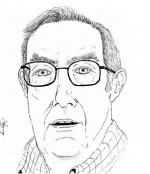 In the blog entitled The Lowdown on Dirt, the three basic classes of contaminants were described. They are – soluble, particulate and a mixture of soluble and particulate. There are, of course many hybrids and permutations but for purposes of discussing the ultrasonic effect on cleaning we’ll limit to these three for now. Later on we can build on the basics and explore some of the more difficult cleaning challenges under each of the above classes.
In the blog entitled The Lowdown on Dirt, the three basic classes of contaminants were described. They are – soluble, particulate and a mixture of soluble and particulate. There are, of course many hybrids and permutations but for purposes of discussing the ultrasonic effect on cleaning we’ll limit to these three for now. Later on we can build on the basics and explore some of the more difficult cleaning challenges under each of the above classes.
Soluble Contaminants –
What I consider a soluble contaminant is something, liquid or solid, for which there is a “solvent.” A solvent is simply something, usually a liquid, that will dissolve or readily mix with the soluble contaminant. In some cases the action is very straight-forward. Water, for example, will dissolve salt or sugar. Water, in fact, is frequently referred to as the “universal solvent” since nearly everything, eventually, will be dissolved by water – even stone. Similarly, a solvent like alcohol, trichloroethane or acetone will dissolve oil and grease. In all of these cases, the “solvent” is used “neat.”
“Neat” Term – The term “neat” has come to mean by itself without anything mixed in or added to it. Some people like their Vodka or Scotch “neat” or “straight.” “Neat” isn’t it?
Some solvents, alcohol and acetone for example, are “miscible” with water meaning that they can be mixed with water in various proportions to create mixtures which may exhibit the solvent properties of both liquids.
There are also “solvents” that are not “neat” or mixtures but, rather, engineered liquids. These are commonly water to which emulsifiers, saponifiers and other agents have been added. These engineered liquids which will “emulsify” a variety of things. Emulsifying agents have the unique property that their molecules (called micelles) are structured so that one end of the molecule loves to link with water while the other likes to link with the material to be dissolved or “emulsified.” Technically, the molecules have one end that it “hydrophilic” while the other is “hydrophobic.” Emulsification is not exactly the same as dissolving although the two are often used interchangeably. If something is “emulsified” it really doesn’t mix with the solvent and lose its own identity but, rather, is broken down into very fine globules and held in suspension by the action of the emulsifying agent.
Interesting Point – In cooking, eggs are commonly used as an emulsifying agent to help oils and fats mix with water in a variety of doughs and batters. If you have ever wondered why so many recipes include eggs, that’s why.
Once a emulsion (forced mixture of a solvent in the form of an emulsifying agent and whatever is being dissolved) the mixture is seldom permanent. Emulsions, if allowed to stand undisturbed for a sufficient period of time, will separate due to the effects of gravity leaving the heavier of the two emulsified materials on the bottom and the lighter material on the top. There are, however, some emulsions that are “stable.” This means that gravity separation will not occur in a relatively short period of time. Notice the use of the term “relatively.” In fact, most emulsions will separate given sufficient time even if that time is weeks or months.
The other thing to know about contaminants being emulsified is that once all the micels in the solution are occupied, emulsification stops. In some cases, the globules of emulsified material increase in size as the micelles contain larger and larger amounts by forming a barrier zone around the perimeter of the emulsified globules. In other cases, the saturated solution totally rejects the added material which immediately floats to the bottom or top of the mix depending on weight. Not surprisingly, emulsions of two materials having nearly the same specific gravity tend to be more stable.
In cleaning, solvents are used to remove the contaminants they will dissolve. In an upcoming blog, I will explain how various cleaning technologies including ultrasonics facilitate this removal process.
– FJF –



 English
English Spanish
Spanish Chinese
Chinese Canada
Canada Mexico
Mexico United Kingdom
United Kingdom




2 comments on “Cleaning – Soluble Contaminants – “Solvents””
John,
This is an important article. We often face emulsification of aqueous cleaning solutions from either mechanical action or from chemical reaction. In the former instance spray, turbulation and mechanical action can cause emulsification. Mechanical emulsifications will indeed re-separate out once the mechanical action stops. With chemical emulsification it may, or may not, separate back out.
Each of these conditions require different approaches to waste water treatment, oil removal and solution recycling. It is therefore very important that both the cause and effect are well understood. Recycling and re-use of aqueous cleaning solutions is very acheivable today and with the proper planning and controls it can produce clean parts with high levels of repeatability, and save valuable resources.
Very good article. I experience a problem with cationic surfacants which was used as emulsifying agent and as anti-forming agent in Henkel cleaning agent “Neutrasel 5225”. The globules on the surface increase in size until they became saturated and separated out, which result in the surfacant staining on the parts.